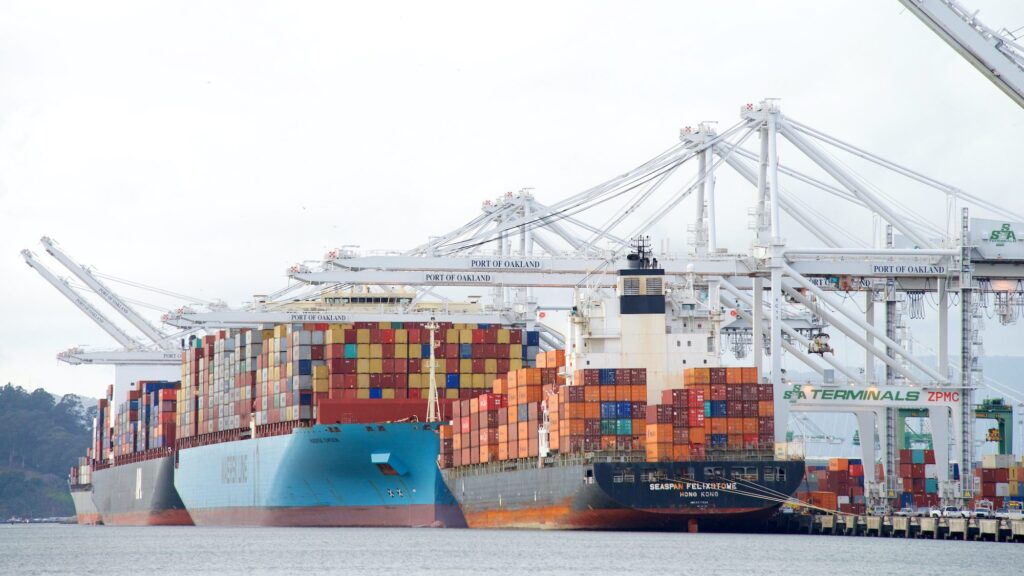In a stunning testament to its robust growth and strategic importance, the U.S. marine economy has reached new heights, clocking in at a staggering $476 billion. This significant milestone underscores the vital role of maritime activities in bolstering the nation’s economic landscape. As global trade dynamics evolve and coastal regions expand their infrastructural capabilities, the marine sector emerges as a pivotal element of the U.S. economic engine.
U.S. Marine Economy Surges to $476 Billion
The marine economy of the United States has seen unprecedented growth, surging to an impressive $476 billion. This growth is reflective of the increased activities in shipping, coastal tourism, and marine-based renewable energy. The expansion is indicative of a broader trend where traditional and emerging maritime industries synergize to drive economic momentum. The National Oceanic and Atmospheric Administration (NOAA) has highlighted this surge as a key indicator of the sector’s robust health and its critical contribution to the national GDP.
Recent years have witnessed a significant transformation in how maritime activities are conducted, with technological advancements and sustainable practices taking center stage. Innovations in shipping logistics, vessel efficiency, and marine biotechnology have not only enhanced operational capabilities but also minimized environmental impacts, paving the way for a more sustainable marine industry. This technological shift is instrumental in propelling the economic valuation of the marine sector to new heights.
The resilience of the U.S. marine economy is particularly noteworthy amidst global economic fluctuations. While other sectors have experienced volatility, maritime industries have shown remarkable stability and growth. This resilience is largely attributed to the diverse components of the marine sector, ranging from fisheries to offshore wind farms, all contributing to a steady economic output and employment generation across the coastal states.
Key Sectors Driving Maritime Growth
Shipping and transportation remain the backbone of the U.S. marine economy, with billions of dollars invested annually in cargo operations and vessel enhancements. This sector’s growth is fueled by increasing global trade and the need for efficient logistic solutions. Außerdem, the push towards greener shipping methods has opened new investment avenues, aligning with international environmental standards and consumer expectations.
The burgeoning field of marine biotechnology also plays a crucial role in the maritime growth narrative. This sector harnesses oceanic resources for pharmaceuticals, food supplements, and chemical products, marking a convergence of sustainability and economic viability. The growth in marine biotech not only contributes to economic figures but also enhances the U.S.’s position in global biotechnology markets, fostering advancements in healthcare and material sciences.
Tourism and recreation along U.S. coasts have seen a vibrant uptick, driven by an increasing number of Americans seeking leisure activities by the sea. This sector’s growth is complemented by investments in coastal infrastructure, eco-tourism, and heritage conservation, which not only boost local economies but also promote sustainable tourism practices. The integration of tourism with cultural and environmental preservation creates a holistic growth model for the marine economy.
In a stunning testomony to its sturdy growth and strategic importance, the U.S. Marine financial system has reached new heights, clocking in at a mind-blowing $476 billion. This huge milestone underscores the important role of maritime sports in bolstering the kingdom’s economic landscape. As worldwide exchange dynamics evolve and coastal areas amplify their infrastructural talents, the marine quarter emerges as a pivotal element of the U.S. Economic engine.
U.S. Marine Economy Surges to $476 Billion
The marine economy of america has visible unparalleled growth, surging to an impressive $476 billion. This increase is reflective of the expanded activities in shipping, coastal tourism, and marine-primarily based renewable power. The growth is indicative of a broader trend wherein conventional and emerging maritime industries synergize to force financial momentum. The National Oceanic and Atmospheric Administration (NOAA) has highlighted this surge as a key indicator of the sector’s robust health and its crucial contribution to the national GDP.
Recent years have witnessed a sizeable transformation in how maritime activities are performed, with technological advancements and sustainable practices taking middle stage. Innovations in delivery logistics, vessel performance, and marine biotechnology have no longer simplest improved operational capabilities however also minimized environmental impacts, paving the manner for a more sustainable marine industry. This technological shift is instrumental in propelling the financial valuation of the marine zone to new heights.
The resilience of the U.S. Marine economy is specially noteworthy amidst global monetary fluctuations. While other sectors have experienced volatility, maritime industries have shown brilliant balance and boom. This resilience is basically attributed to the numerous components of the marine region, ranging from fisheries to offshore wind farms, all contributing to a steady monetary output and employment generation across the coastal states.
Key Sectors Driving Maritime Growth
Shipping and transportation remain the backbone of the U.S. Marine economic system, with billions of greenbacks invested annually in shipment operations and vessel improvements. This area’s boom is fueled via increasing worldwide trade and the want for efficient logistic answers. Außerdem, the push closer to greener delivery strategies has opened new funding avenues, aligning with worldwide environmental requirements and purchaser expectations.
The burgeoning area of marine biotechnology additionally performs a important position within the maritime growth narrative. This region harnesses oceanic assets for prescribed drugs, food supplements, and chemical merchandise, marking a convergence of sustainability and monetary viability. The increase in marine biotech now not most effective contributes to financial figures but additionally complements the U.S.’s role in worldwide biotechnology markets, fostering improvements in healthcare and material sciences.
Tourism and endeavor alongside U.S. Coasts have visible a colourful uptick, driven by using an increasing number of Americans searching for leisure sports with the aid of the sea. This area’s boom is complemented through investments in coastal infrastructure, eco-tourism, and history conservation, which now not handiest improve local economies but additionally promote sustainable tourism practices. The integration of tourism with cultural and environmental maintenance creates a holistic boom version for the marine economic system.
The ascension of the U.S. Marine economic system to $476 billion is a clear indicator of its vital significance and dynamic nature. Driven by key sectors which include delivery, marine biotechnology, and coastal tourism, the maritime enterprise no longer best supports thousands and thousands of jobs however additionally performs a critical function inside the environmental stewardship of the nation’s massive and precious ocean assets. Da die USA. Continues to innovate and spend money on its marine sectors, the future looks promising for sustained growth and prosperity on this fundamental part of the American financial system.










